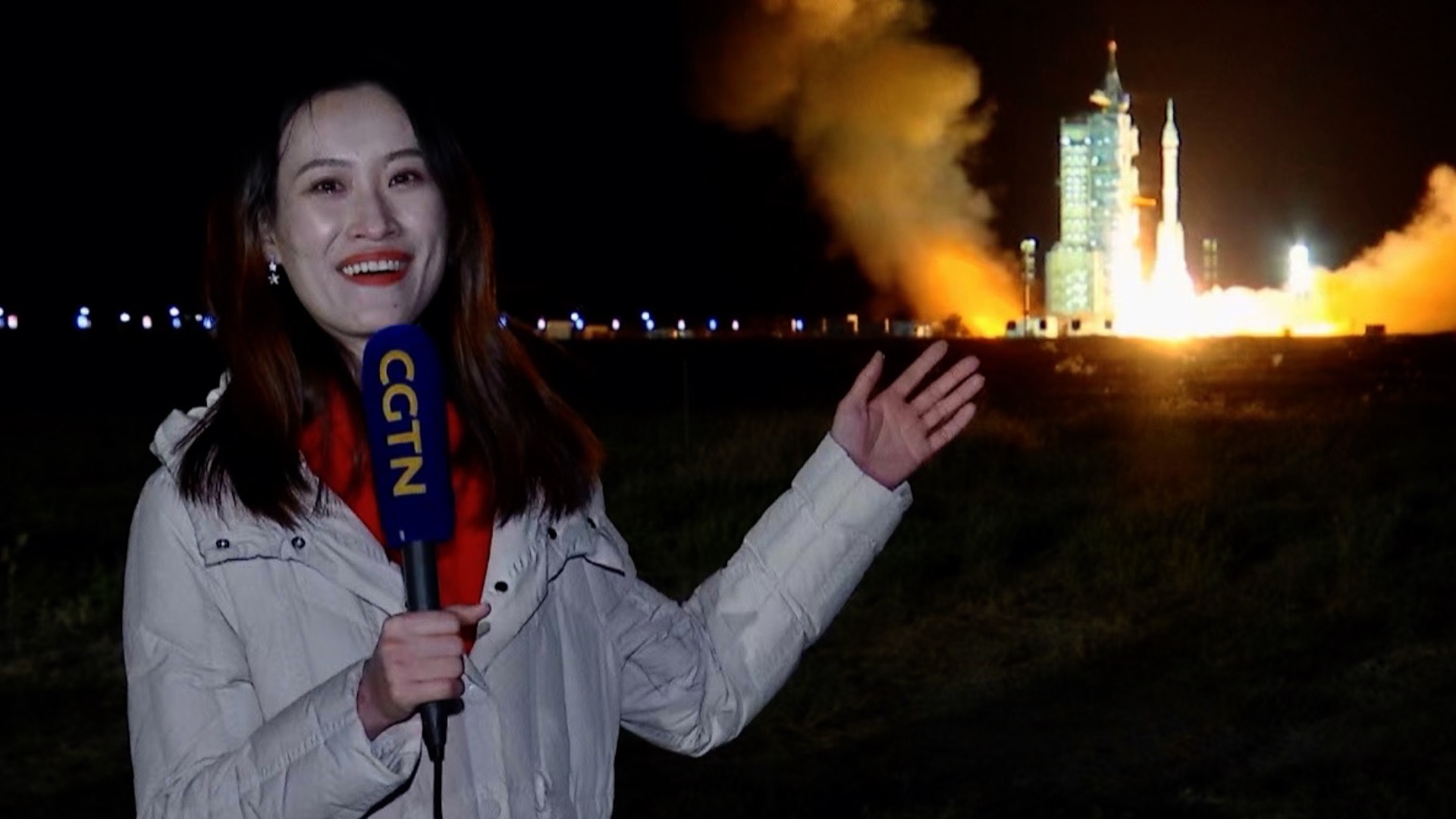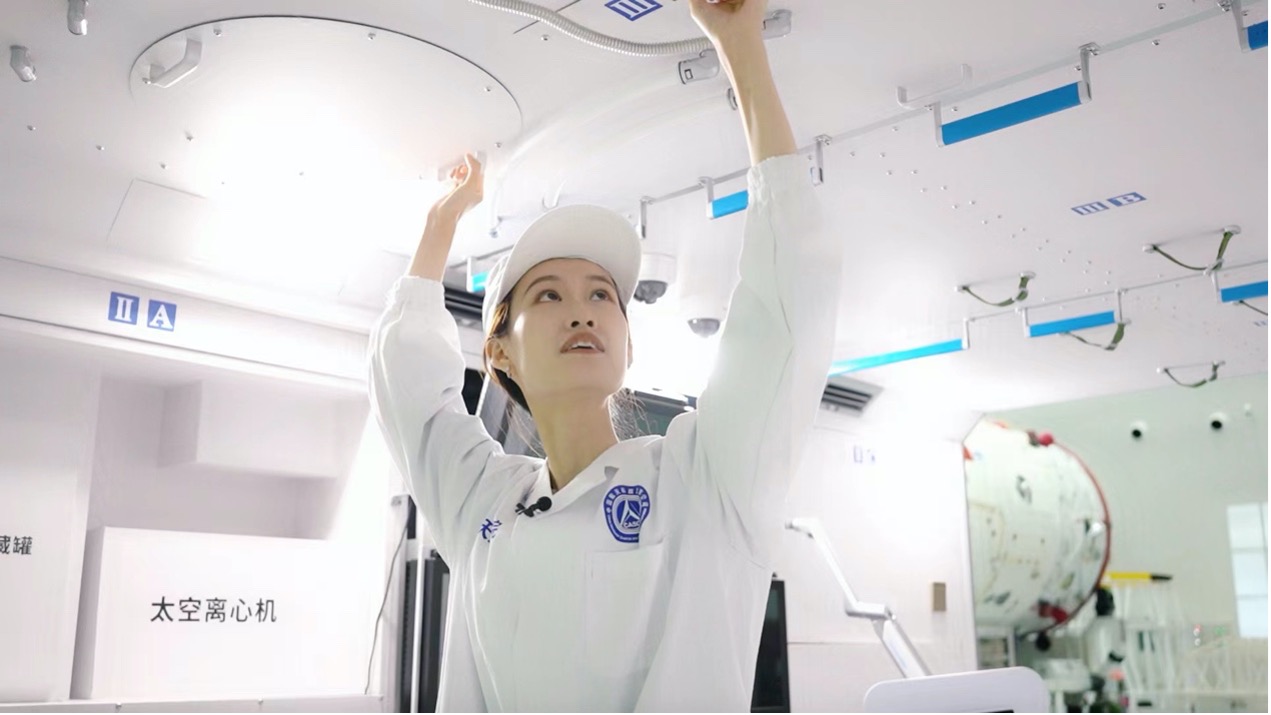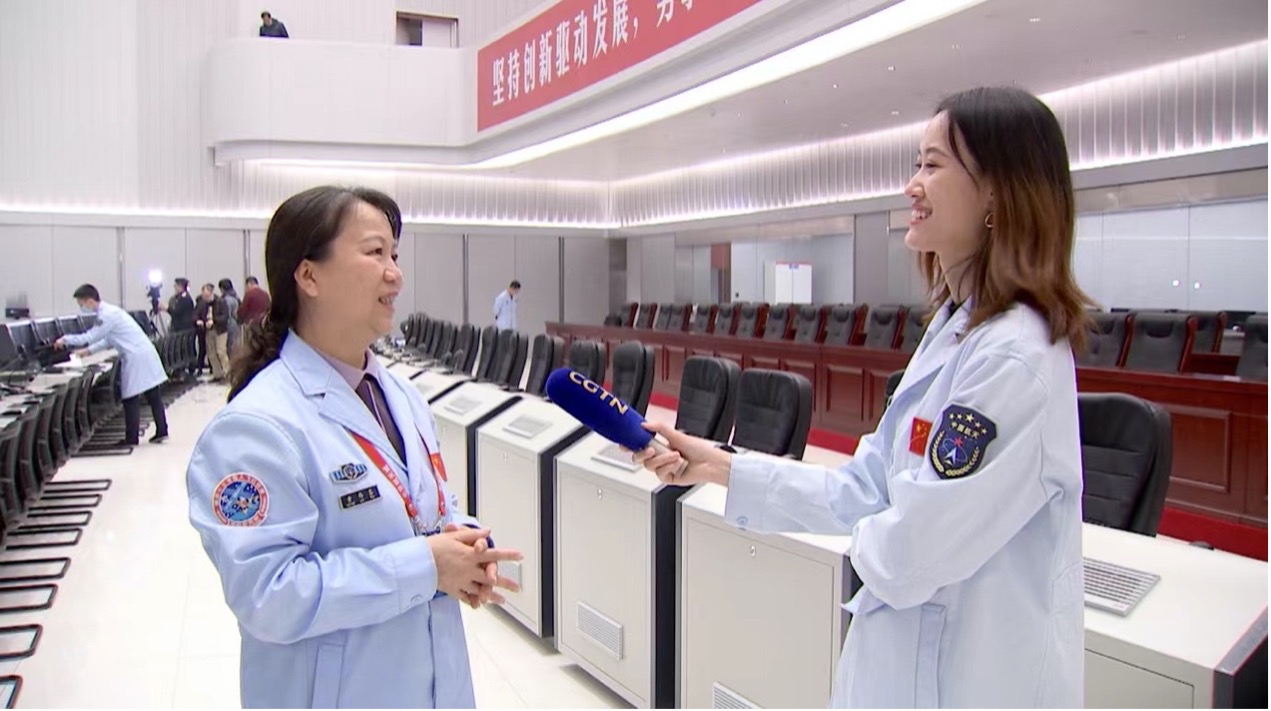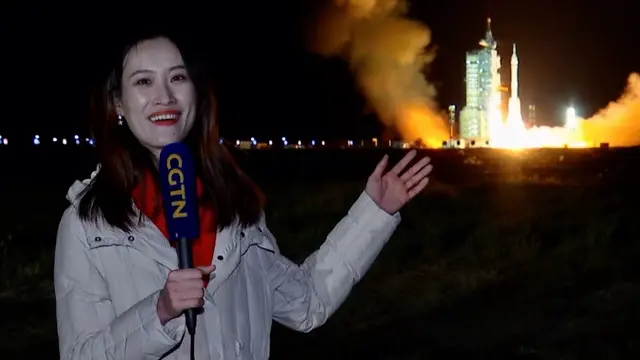02:09

**Editor's note: **This year marks the 65th anniversary of thefoundingof China'saerospaceindustry. With the maiden flight of Long March-5B heavy carrier rocket in May 2020, China entered the third step of the country's manned space program. CGTN reporter Liu Jiaxin witnessed many key spaceevents this year.Looking back at 2021, she has a lot to share.
If you go to any of the space-related institutions in China, the architecture looks very much the same.The sites are spacious and have an understated stylebut are solid.Just like what China has achieved over the past year in space.
In 2021, Chinese astronautsstarted their journey at the space station. Tianhe, the space station's core module, was launched into space on April 29, followed by two cargo and manned missions.The astronautstraveled tothe space station in batches tocomplete verificationof key technology and construction tasks.
In September, Shenzhou-12astronauts ended their three-month stayin space and safely returned to Earth,while the crew of Shenzhou-13 took over and continued to work at Tianhe.

Reporter Liu Jiaxin visits the model of the Tianhe core module at China Aerospace Science and Technology. /CGTN
The most notable event during the Shenzhou 13 mission would be a
60-minute science class
from space. Theevent was televised live to aglobal audience. And the ground technicians who sit in the space flight control centerensured that the programran smoothly.
I had the privilege of witnessing two manned missions this year, and it is hard to forget the excitement at the scene. What impressed me the most about these scenes was that each mission ended with the joy of success. That is much to be celebrated.
"In 2022, we will launch the experimental module Wentian and Mengtian to complete the construction of China's space station," said Sun Jun, chief engineer of the space mission at the Beijing Aerospace Control Center.
"For our astronaut system, we also need to send Shenzhou-14 and Shenzhou-15 crews to complete several months of flight missions," said Huang Weifen, chief designer of the astronaut system of China's manned space program.

Huang Weifen, chief designer of the astronaut system of China's manned space program, in an interview with CGTN reporter Liu Jiaxin after the first 60-minute science class on December 9, 2021. /CGTN
If youhaven'tnoticed,you can actually seethe space stationflying overhead at night. In 2022, I will still be here with you,bringing you the latest news fromChina's space program.
 简体中文
简体中文




